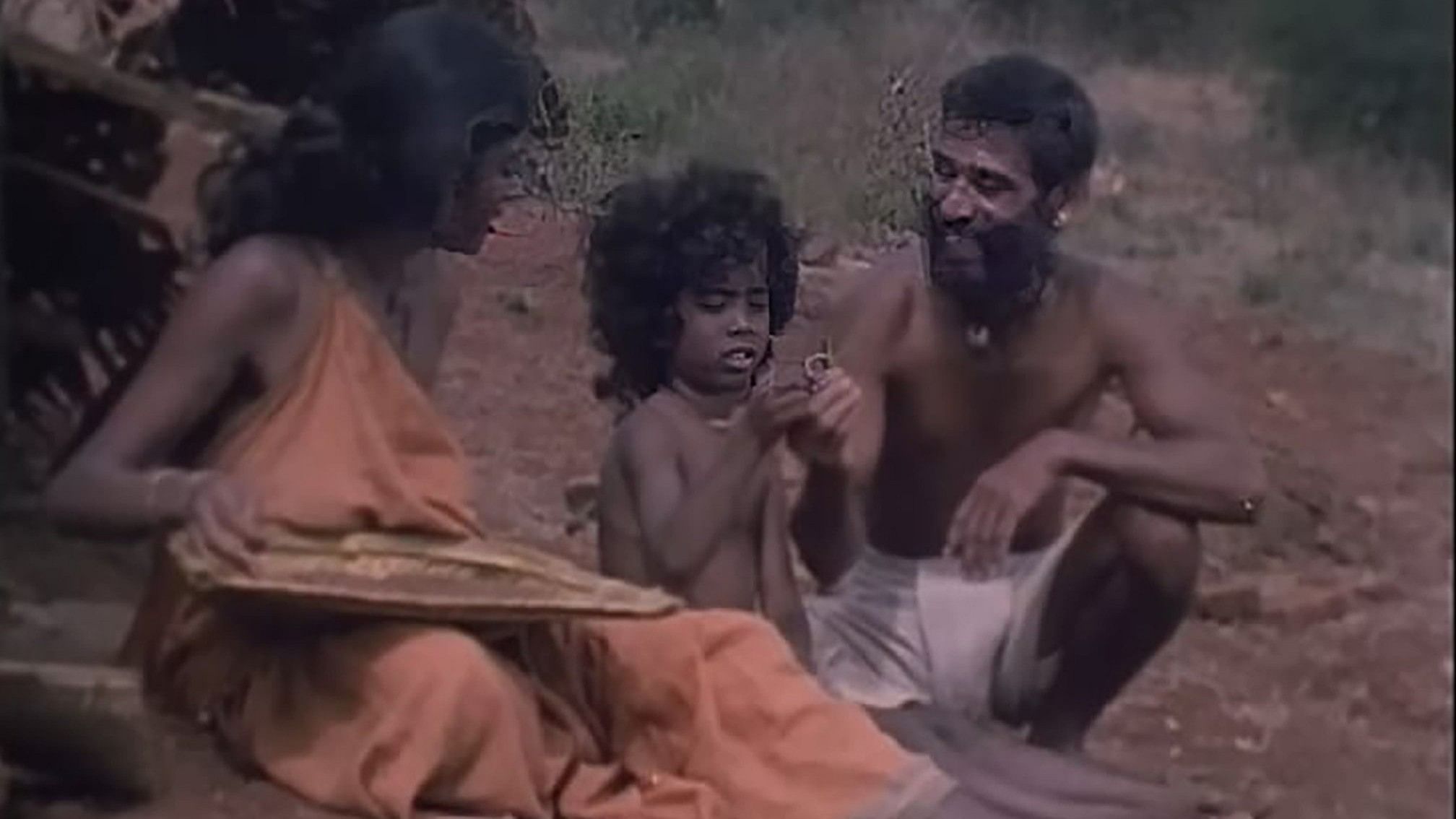
Credit: Special Arrangement
On September 1, Pattabhi Rama Reddy’s last film, Devarakadu was screened at Bangalore International Centre, 30 years after it won the National Award for Best Environmental Feature Film. The film was shot in the tribal wilds of Heggadadevanakote, Nugu and Billigiriranganabetta.
How would today’s audience receive it, one wondered? Have conversations about climate change opened doors?
The film tells the story of a Soliga tribal family — Maara, his wife, Kenchi and their son, Deva — living on the periphery of the forest and practising shifting cultivation. Twin circumstances of deforestation and unethical labour contracts cause Maara’s death and push young Deva and his mother to the city. Thus it also becomes the story of the itinerant labourer. Deva becomes a rag-picker with a gang of friends including a boy called Rahim. When he grows older, taking a loan, he buys a cycle rickshaw.
Embedded in the story are details that feel like the director’s cinematic scribbles to the future — the friendship between Deva and Rahim, the adult literacy school, the primacy of ground wells, the divine nature of trees and the existential battle between rationality and emotion.
At the end of the screening, Pattabhi’s children, Nandana Reddy, founder of The Concerned for Working Children, and guitarist Konarak Reddy took to the dais for the discussion. The reaction from the audience was profound. Vijay Chandru, academic and entrepreneur said, “This film is so important and relevant today because it critiques the anthropocene.” Chandra Jain, artist and founder of Kadambari for folk arts, pointed at the poetry and philosophy in the film and called for more to watch it.
Several young members in the audience said “Please don’t touch the film, don’t edit, don’t change anything, but please show it widely.” Lekha Naidu, cultural curator, observed that Pattabhi has a running theme in his films, from Samskara to Devarakadu, of a comic character, who presents a challenge to the protagonist’s romantic world view. In ‘Samskara’, we see Putta, foil to Praneshacharya, and in Devarakadu, we see Swamy.
Devarakadu opens with close-ups of an old Deva, beautifully essayed by theatre actor, K T Abraham, carefully examining a teak seed and making little piles of multi-coloured tree seeds. We become privy to a world where the wisdom of polyculture and afforestation, is not only present but revered. Where tribal knowledge of botany and medicinal plants is essential to life and survival.
Interestingly, what may appear as a very modern idea for a film, was imagined by Pattabhi in 1992 when climate change was not spoken of. The inspiration was a newspaper article he had read, about a man who grew a forest. The Institute for Cultural Research and Action (ICRA) and Fedina-Vikasa came on board, representing the rights and needs of the Soliga and Jenu Kuruba communities. A N Yellappa Reddy, the chief conservator of forests, Karnataka, offered advice on the forest scenes. The Concerned for Working Children, an organisation that works with young rag-pickers, were the producers. So, in 1992, this feature film was made with the help of civil society organisations primarily involved with eco-justice, rural-urban migration and tribal rights. From today’s perspective of OTTs and over saturation of media, this seems like nothing short of a miracle.
The transformative moment occurs when an ailing Kenchi asks Deva to take her back to their land. Deva sneaks her out of the hospital, places her in his cycle rickshaw, begins pedalling out of the chaos of the city and towards the distant hills. Pattabhi was influenced by Henrik Ibsen’s ‘Peer Gynt’, so gave this journey the magical aura of Åse showing her son, Peer Gynt, the fairyland of Soria-Moria. Deva’s return to the land becomes symbolic, encompassing the dying of his mother with the beauty of eternal life.
The film ends with a long triumphant panoramic shot of the forest that Deva has grown. It was executed by cinematographer Navroze Contractor. It is accompanied by the haunting, raw vocals of singer, Nishant Bali. The narrative is complete: with nature taking her rightful place in the larger scheme of things.